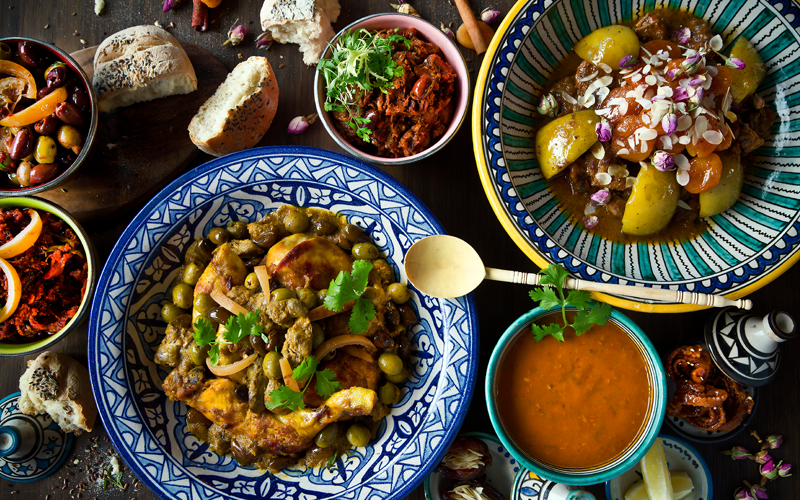This novel was originally published in the US under the title PEACHES FOR FATHER FRANCIS, before reverting to the original UK title for the paperback edition. If you’re studying it as part of a reading group, you may find the following useful:
Summaries of the previous books are available if you’d like a quick recap.
Click here for THE LOLLIPOP SHOES.
This novel takes place during the Muslim holy month of Ramadan, during which Muslims fast during the day, and take iftar with their families after sunset. Find out more about iftar recipes here…
What’s the difference between a burqa, a hijab, and a niqab? Find out here.
Questions for Group Discussion:
- This novel was written at the point at which France was about to ban the burqa and other Muslim face coverings in public. In what way does the author bring out the ongoing political tensions of the country as a whole as well as the ongoing politics of the small community?
- Vianne comes back to Lansquenet to find that a number of things have changed. What has changed? What has stayed the same?
- Reynaud is forced to ask Vianne’s help, much against his inclination. What does this tell you about his character and their relationship?
- The new community across the river is not really so very different to the traditional French one. In what ways does the author highlight this?
- The children of both communities come together easily. Why do you think this is? What is the author trying to convey regarding the themes of race and culture?
- Food is a means of crossing over cultural boundaries in this book. How many examples can you find of this?
- Ines Bencharki is difficult for Vianne to understand and communicate with. Why? How do you explain her hostility?
- Why do the others in her community mistrust Ines so much? And in what sense could she be seen as another version of Vianne herself?
- For the first time, Reynaud finds himself on the receiving end of the community’s supicion and disapproval. In what way does this alter his view of the world?
- What is the attitude of most of the villagers to the new community across the river? What, in your view, is the explanation for this?
- Both sides of the village take their cue from a religious leader within the community. Compare both styles of religious leadership within the two communities. Where is the conflict? Can it be resolved?
- Why has the author chosen the peach as a central metaphor? What is its significance here?
- Armande Voizin, though long dead, is still an active character in this story. What is her role? Why is it important?
- The Muslim community of Lansquenet has a strict attitude to honour. In what way does this affect the behaviour of different characters?
- Reynaud suffers a crisis of faith. Why? And how does his experience help him understand what really matters to him?
- As Vianne finally learns Ines’ secret, how does this change the way she sees her? How about you? Do you see her differently now?
- Identity – its origins, its changes, its truth and its falseness – is a strong theme in this novel. How many examples can you find of different uses of identity in the novel? Why do you think it was important to the author to highlight this?
- Anouk is beginning to grow up fast. How does Vianne take this? How do you see their relationship changing?
- “People are not always what they seem.” In what way could this be said to be one of the main themes of the book? And what do you think the author is trying to say about it?
- Food as a metaphor plays a significant role in this book. What do you think it represents? In how many different ways is it used? And why do you think the author chose to set her story during a period of fasting?

